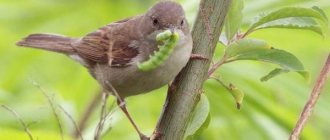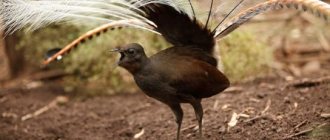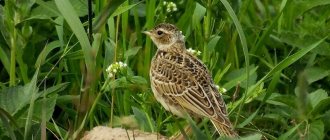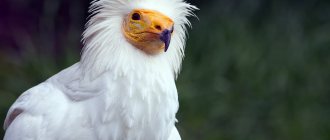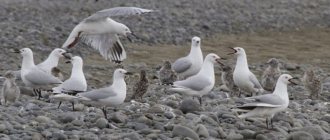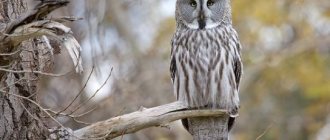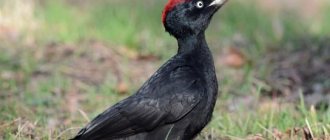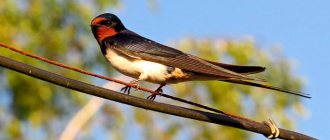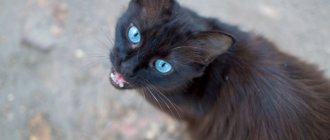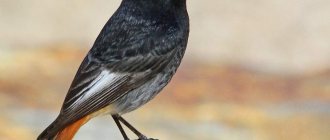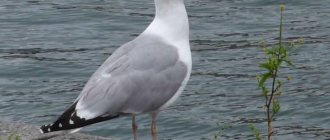WHAT DOES IT EAT?
Wrens feed mainly on animal food: insects at all stages of their development. Small bugs, spiders, aphids, ants, slugs, as well as their larvae and butterfly pupae - this is the main menu of the wren. In addition, this bird eats small snails, small fish and tadpoles. Wrens, in search of food, scurry through nettle thickets, bushes, windbreaks, and run through trees. The bird's diet also includes a small amount of seeds, and in the fall - various berries. Wren chicks are fed exclusively on insects.
Nutrition
The wren's diet is based on various insects and other invertebrates: grasshoppers, beetles and their larvae, earwigs, spiders, crustaceans, millipedes, woodlice, and mollusks. In the fall, when animal food becomes scarce, they eat berries (blueberries, elderberries), seeds of some plants, and even seaweed. Unlike other species of the family, wrens can sometimes hunt tadpoles and small fish while wandering in shallow water. They obtain food on the ground, searching damp places, piles of brushwood, tree roots and thickets of bushes. Sometimes wrens accompany badgers, collecting insects disturbed by them.
WHERE DOES IT LIVE?
The wren is a bird that occupies a large range. It is found in parts of Asia, Europe, North Africa and North America.
Wrens live in tropical and temperate forests, deserts, swamps and mountains. The birds inhabit undergrowth, shrubs, fern and bramble thickets, usually close to water. Some wren populations are sedentary, others are nomadic or even migratory (depending on the areas in which they nest). Wrens search for food on or above the ground. The greatest danger for these small birds is cold, frosty winters. If in winter the ground is covered with very deep snow or severe frosts continue, this often leads to significant losses - approximately half of the bird population dies.
Wrens are small birds, so on very cold nights they lose more heat than larger birds. In winter, several individuals can spend the night together in nests, huddled together.
Skilled builder
The construction of nests is always done by the male. Like a real man, he approaches this process carefully. Collecting branches and moss throughout the area, he builds a spherical nest with a round hole for the entrance. The wren covers the bottom of the future house with its own feathers and down, so it is always warm and cozy. It’s curious, but only recently did scientists learn what a wondrous secret the wren bird was hiding. Photos taken with a hidden camera showed that the same male constantly appears near two nests that are distant from each other. Continuing their research, ornithologists discovered that males are not limited to building just one nest. So, having completed the construction of the house, they immediately take on new work. And this is necessary in order to lure as many females as possible.
REPRODUCTION
Male wrens stay in individual territories all year round. By singing loudly, they mark the boundaries of their territory. Wrens sing especially loudly at the end of March, while courting females and building nests. At this time, the male builds several ritual nests, from which the female chooses what she likes most. Wren nests are usually located in dense bushes low above the ground. They are spherical, with a side entrance. Attracted by the male's singing, the female chooses the most convenient nest and lays eggs in it. Only the female incubates the eggs. At this time, the male guards the territory or, which also happens, courtes another female. Soon eggs appear in one of the spare nests. Each female lays eggs twice per season, so wrens are parents of many children. Egg incubation lasts approximately 14-15 days.
Over the next 16-17 days, the parents feed the chicks together, but the male flies to the nest less often than the female. When the babies leave the nest, the female begins the second clutch.
Treatment of urticaria
The only way to get rid of the disease is to avoid contact with the allergen, which is previously detected by laboratory tests. If testing does not reveal a provoking factor, and the urticaria is episodic, then taking antihistamines will quickly eliminate the symptoms.
During treatment, it is recommended to follow a diet that, in case of urticaria, will help prevent the recurrence of the disease. The menu should include only hypoallergenic products: lean boiled meat, soups with recycled meat broth or vegetarian. It is better to choose rice, buckwheat, and oatmeal from cereals. Low-fat cottage cheese, natural yogurt, apples, dried fruit compote, excluding raisins, and whole grain bread are recommended.
Citrus fruits, nuts, fish and all seafood, chocolate products, smoked meats, coffee, eggs, honey, and store-bought baked goods should be excluded from the menu during treatment.
Wren OBSERVATIONS
Although the bird is common throughout Central Europe, it is not easy to see. The wren is a small chestnut-brown bird. Due to its small size and protective plumage, the bird is perfectly camouflaged in the bushy undergrowth and among other vegetation. You can often hear the wren singing. In spring, this bird can be easily detected by its very loud singing, the purpose of which is to call for a female and warn rivals that this territory is already occupied. The male wren runs along the ground in search of food and building material for the nest and sings loudly. Sometimes he stops, flies to the top of a tree or sits on a stump and performs an aria. The wren's song is beautiful and easy to remember. By this song, by the manner of performance and by its raised tail, it is easy to recognize this bird. The wren's diet is limited, making them very difficult to keep in captivity. In winter, wrens can be fed by pouring food for insectivorous birds into feeders. Heaps of brushwood should be left in gardens - insects will hide there.
Nesting
Upon arrival at the nesting sites, male wrens occupy territories and immediately begin to emit crackling calls. The area is chosen carefully - it should be an area with numerous places for shelter - for example, dense bushes or a group of fallen trees. The male independently begins to build a large number of nests (which is not typical for other birds). The wren has from 6 to 12 such nests. During experiments, it was found that females prefer males with a large number of buildings. The nests are located low above the ground or directly on the ground - between the roots and branches of a lying tree, in a low, slot-like hollow, on the bank of a stream, and are a spherical formation with thick walls and a small side entrance hole. Spruce twigs, fern leaves, dry blades of grass, and lichen can be used as building materials. An indispensable attribute of the finished nest are lumps of green moss and dry leaves from last year. As a rule, initially all nests are unfinished to varying degrees, and only when the female chooses a nest suitable for laying, it is completed and lined from the inside with moss, pieces of wool and feathers. Sometimes there may be no litter at all. The remaining nests are alternately used by the male for overnight stays.
CHARACTERISTIC FEATURES OF THE Wren
The wren's characteristic features are its small size and raised tail, sticking out almost vertically. Another feature of this bird is that, like a mouse, it scurries around in the thickets. Despite the small size of the wren, its voice is surprisingly loud. This is probably due to the fact that the bird lives over a large area. Adult male and female wrens are similarly colored; The coloring of young birds is lighter.
The nest is made by a male wren (the nest is quite large compared to the size of the bird itself). The female lays five or six eggs in the nest.
— Habitat of the wren
WHERE DOES IT LIVE?
The wren is found in Europe, North Africa, parts of Asia and North America. This is the only representative of the family that lives in both the New and Old Worlds.
PROTECTION AND PRESERVATION
The wren is one of the most numerous birds in Central Europe, although its population size depends on how cold the winters are.
First aid for hives
It is important that you always have allergy medications in your home medicine cabinet, since urticaria in adults, and in children too, can appear at any time. Allergy medications can be in the form of drops or tablets. Modern remedies do not cause drowsiness and have virtually no side effects.
Doctors recommend having in your home medicine cabinet to eliminate urticaria and itching, Fenistil drops, which can be used from childhood, Erius tablets, which have a long-lasting antihistamine effect after administration, Loratadine, which helps cope with Quincke's edema, which often accompanies urticaria.
It is important to take the medicine at the first symptoms, without waiting for the general condition to worsen. If after 20 minutes from the moment of administration there is no improvement, you should call an ambulance.
Bird Voices - Wren (Troglodytes troglodytes). Video (00:02:00)
Wren (Troglodytes troglodytes) This is a very small bird with great vitality and a very strong voice for its size. It differs from other birds by its short, upturned tail. Its beak is thin and straight, its wings are short and rounded. The color is uniform: the upper body, wings and tail are chestnut-brown with a transverse dark pattern, the underside is grayish with a transverse pattern. Its weight is only 7-9 g, and its body length does not exceed 10 cm. The wren inhabits shrubs and forest undergrowth in a wide variety of landscapes on the plains and in the mountains, but gives its preference to damp ravines or forest littered with dead wood. In many places it is a common sedentary or nomadic bird. Northern populations are migratory. In Europe, the wren colonizes habitats altered by humans. It penetrates into villages and even cities - into parks, gardens or other places - where there are dense bushes or bush belts. The wren most often stays near the ground, deftly, like a mouse, it scurries in the thick of the branches, searching all the nooks and crannies. They say that wrens, like mice and voles, are able to move under the snow. They are reluctant to fly and rarely appear in open spaces.
The song of the wren is one of the best songs of birds in our latitudes. It resembles the song of a canary and consists, as A. Brem wrote, of “a long suite of variously changing high flute tones, which in the middle of a rather long song turn into a sonorous gradually fading trill, the latter is repeated often towards the end of the song, constituting, as it were, its conclusion. The sounds are so strong and full that you wonder how such a small bird could produce them.”
Complications of urticaria
It is important to know what hives look like and to be able to provide first aid correctly. This will help prevent the development of severe complications that can lead to death.
Often urticaria is accompanied by Quincke's edema, which is also called angioedema. Its development in the larynx area is especially dangerous, as it can compress the trachea and impair breathing.
Another serious complication is anaphylactic shock. This is a life-threatening immediate allergic reaction that occurs when the human body is hypersensitive to a particular allergen. Usually develops upon repeated contact with the allergen and requires immediate medical attention.
Types of nightingales
All regional varieties of nightingales can be divided into only two categories: ordinary and southern. We have common nightingales. They practically do not differ either in appearance or in singing. Except that the common ones have a lighter belly and more varied trills.
Photo: erbirds.ru
Finch (50 photos): description of the bird, habitat and what it eats
Behavior
One of the behavioral features of the house wren (also characteristic of some other species of the wren family) is its tendency to destroy the eggs of other birds, mainly nesting in hollows. This characteristic behavior was noticed at the beginning of the twentieth century, and some authors called for combating the uncontrolled spread of these birds by limiting the construction of birdhouses for them. The wren's prey primarily includes cavity-nesting birds such as nuthatches, chickadees, and the related Bewick's wren (Thryomanes bewickii); common sparrow bunting.
